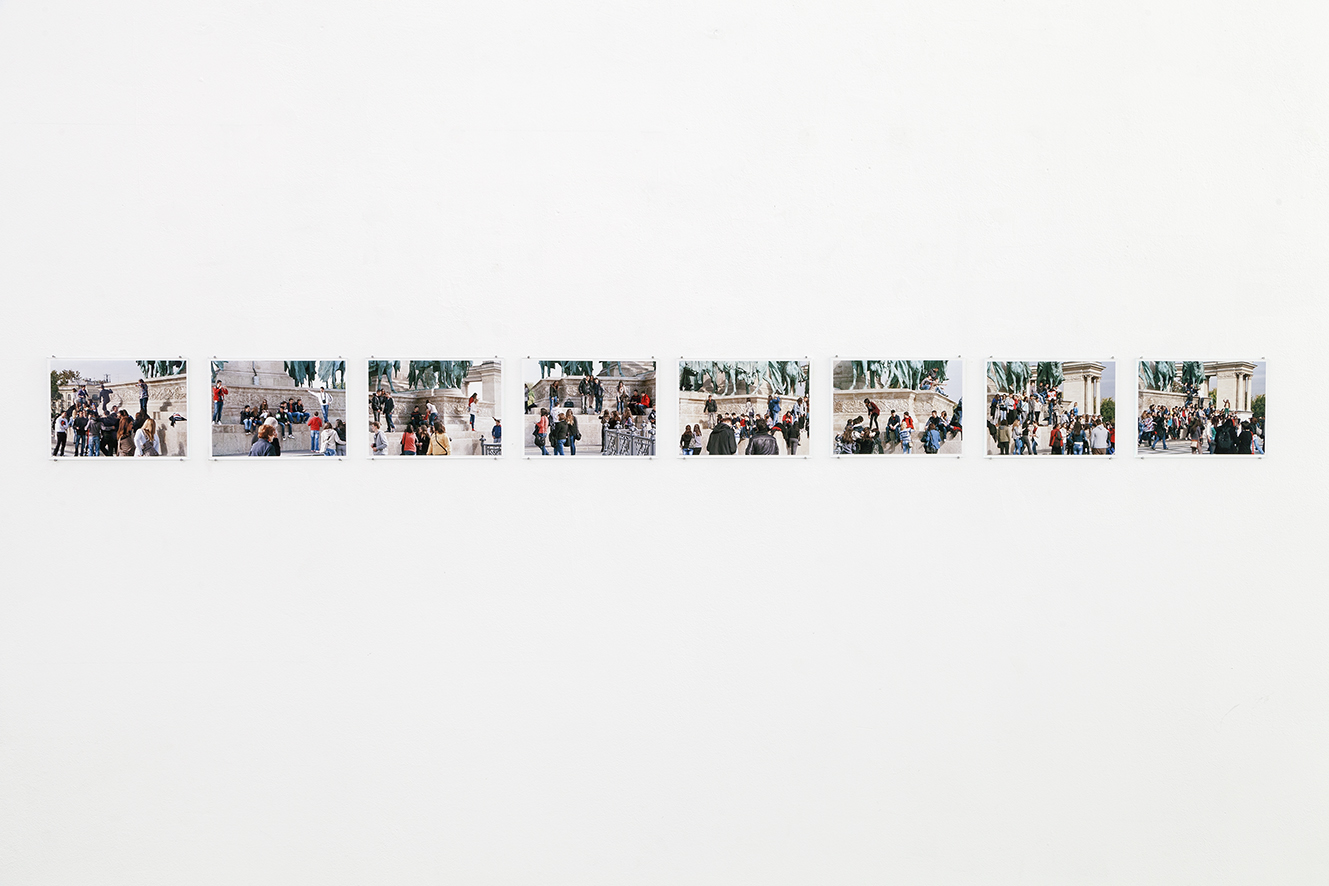
The exhibition TOACTUALLY QIMAIKE IN THESE! at Galerie b2_ shows works by Christian Schellenberger and Daniel Poller that were created in China on the one hand and in Hungary on the other. In their work processes, they deal in different ways with the complexity of temporal structures of public space.
Christian Schellenberger uses streets and cafés of big cities, trains and other means of transport as his primary working space. Under aggravating conditions, triggered and driven by a situation that is temporally and spatially limited, he creates script-like drawings that each time take in a new environment and link up with his subjective now-state.
Daniel Poller’s documentary photo essay „field notes of fences“ reveals various power relations that – drawing on a specific past – are at work in the present on the future of Hungary’s so-called „main political scene“.
The exhibition will be complemented by a reading by Graffitimuseum, which will present the poetry collection CALYBA, in which tags are condensed into sound poetry, at the finissage on 7 August.
In TOACTUALLY QIMAIKE IN THESE! Christian Schellenberger presents, on the one hand, a new series of drawings that he developed during his train journeys from Berlin to Beijing and on many trips within China. During a train journey, the boundaries between inside and outside, between movement and standstill, become blurred. Schellenberger experiences a reinforcement of these conditions in the act of drawing, which is always accompanied by a certain sensitisation. He connects with the machine train that travels through the unknown landscapes, while the resulting automated movements of his hand create strokes and lines on the paper. On the other hand, the series „Buildings & Busrides“ is shown, which are silkscreen prints on digital print foils. The templates for the transparencies were made in daily drawing sessions in a shopping mall in Beijing.
Under the impression of the hustle and bustle there, Schellenberger scribbles until a script-like element emerges that both corresponds with what he has already drawn and corresponds to his inner state of mind. When this is there, he proceeds systematically, drawing it repeatedly, moving from left to right and from bottom to top. Repetition resists the idea of the new, but for Schellenberger the so rarely new can result precisely from the process of repetition. The lines and signs change slowly and form a condensed grid structure that grows upwards. The stretched formats are reminiscent of skyscrapers built too quickly and already crumbling. They function like a database or a writing system in which the iconic has lost its meaning.


Reed pen and ink on paper
42 × 95,4 cm each

Buildings & Busrides, 2015
Screen print on digital print film

Buildings & Busrides, 2015
Screen print on digital print film
299 × 76 cm

Buildings & Busrides, 2015
Screen print on digital print film
473 × 76 cm

Buildings & Busrides, 2015
Screen print on digital print film
223 × 75 cm
Daniel Poller
During a stay in Budapest, Daniel Poller moved his camera around the Hungarian parliament building. Kossuth Square in front of it was under reconstruction at the time. Already in 2010, the Hungarian government under Victor Orbán had decided to give Kossuth tér back its pre-1944 appearance. This was also intended to give expression in public space to the new constitution and Hungary’s supposedly reclaimed independence. Historical views of the past and digital renderings of what was to come were displayed on the construction fences and superimposed on the present state of Kossuth Square. Shortly before Poller took his pictures, the Fidesz government, with an absolute majority in parliament, had Mihály Károlyi’s monument standing there dismantled and planned to replace it with Istvan Tisza’s monument, destroyed in 1945. Today, this process has been completed, the historical narrative has been cleansed of a nest-destroyer from the point of view of Hungary’s national-conservative forces, and history has been revised. „field notes of fences“ resulted in an artist’s book (2014) dedicated to the process of this historical discontinuity in the clash of pictorial spaces, itself creating a fractured narrative. But although the iconoclasm on Kossuth tér is now already in the past, the question of the construction of a historical memory remains highly topical. In the b2_ gallery, Daniel Poller is now showing „field notes of fences“ as a three-channel slide projection that allows the individual images to collide with each other again and again, thus creating a dynamic pictorial space.

8 archival inkjet prints
each 14 × 19 cm, edition of 3 + 2


































